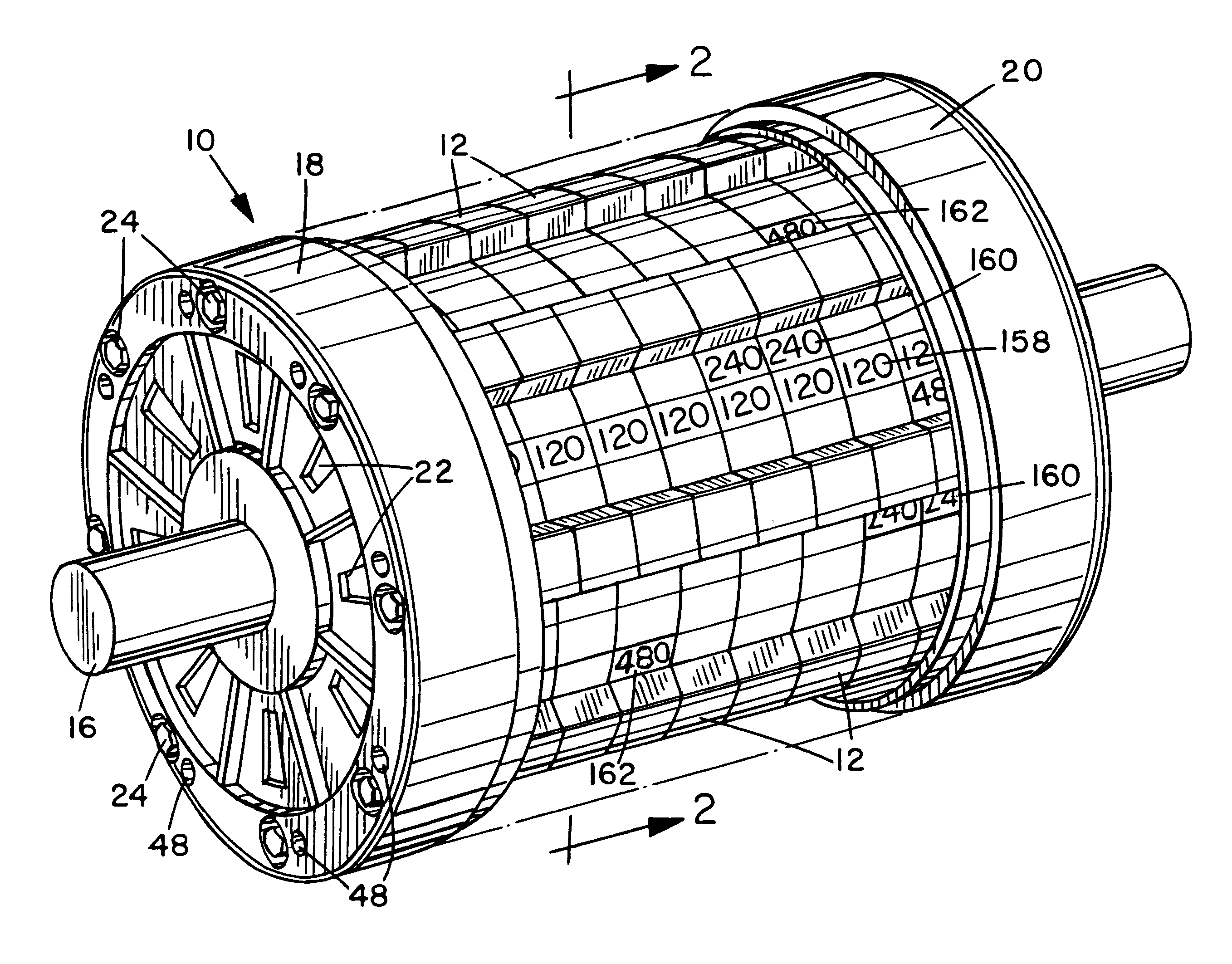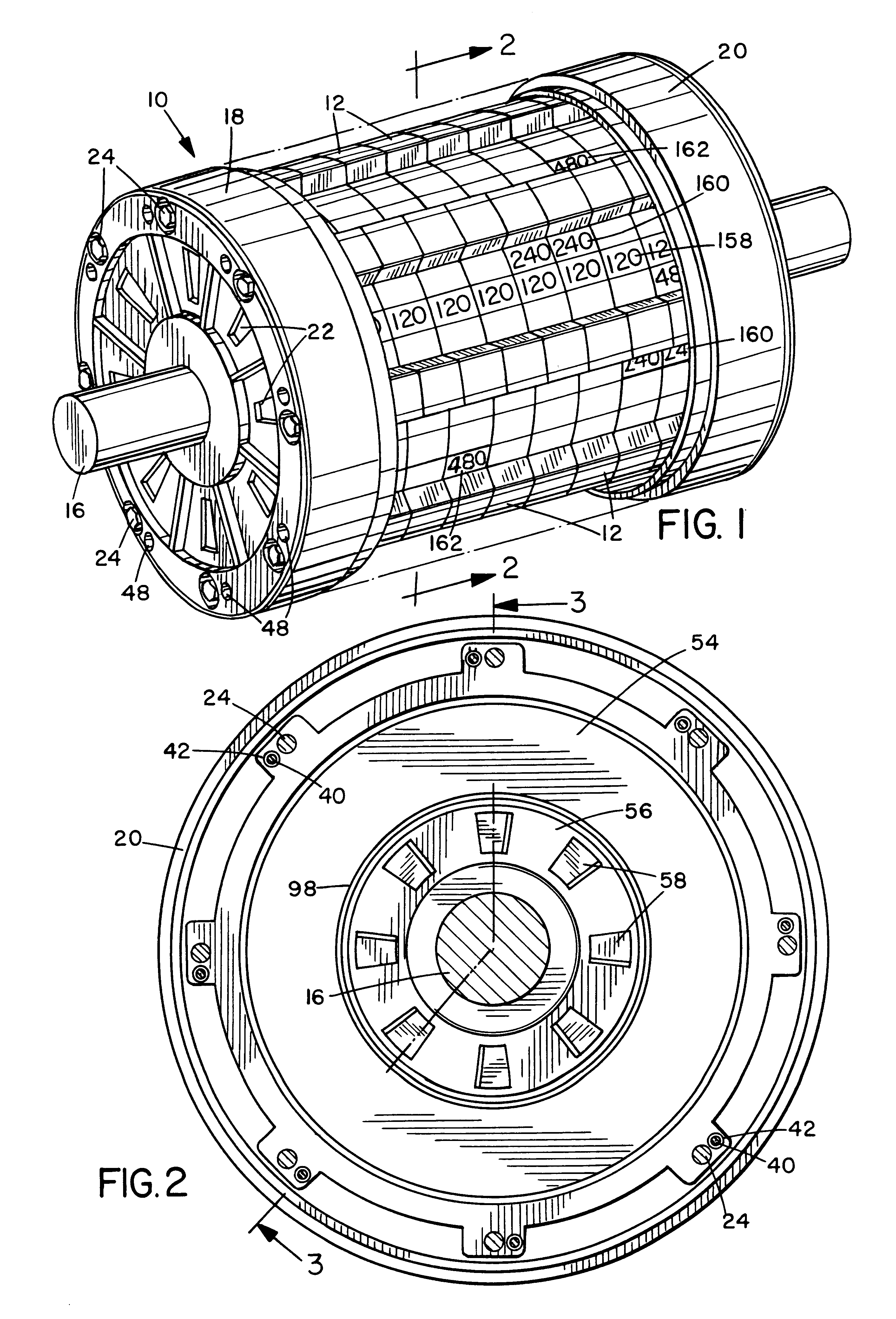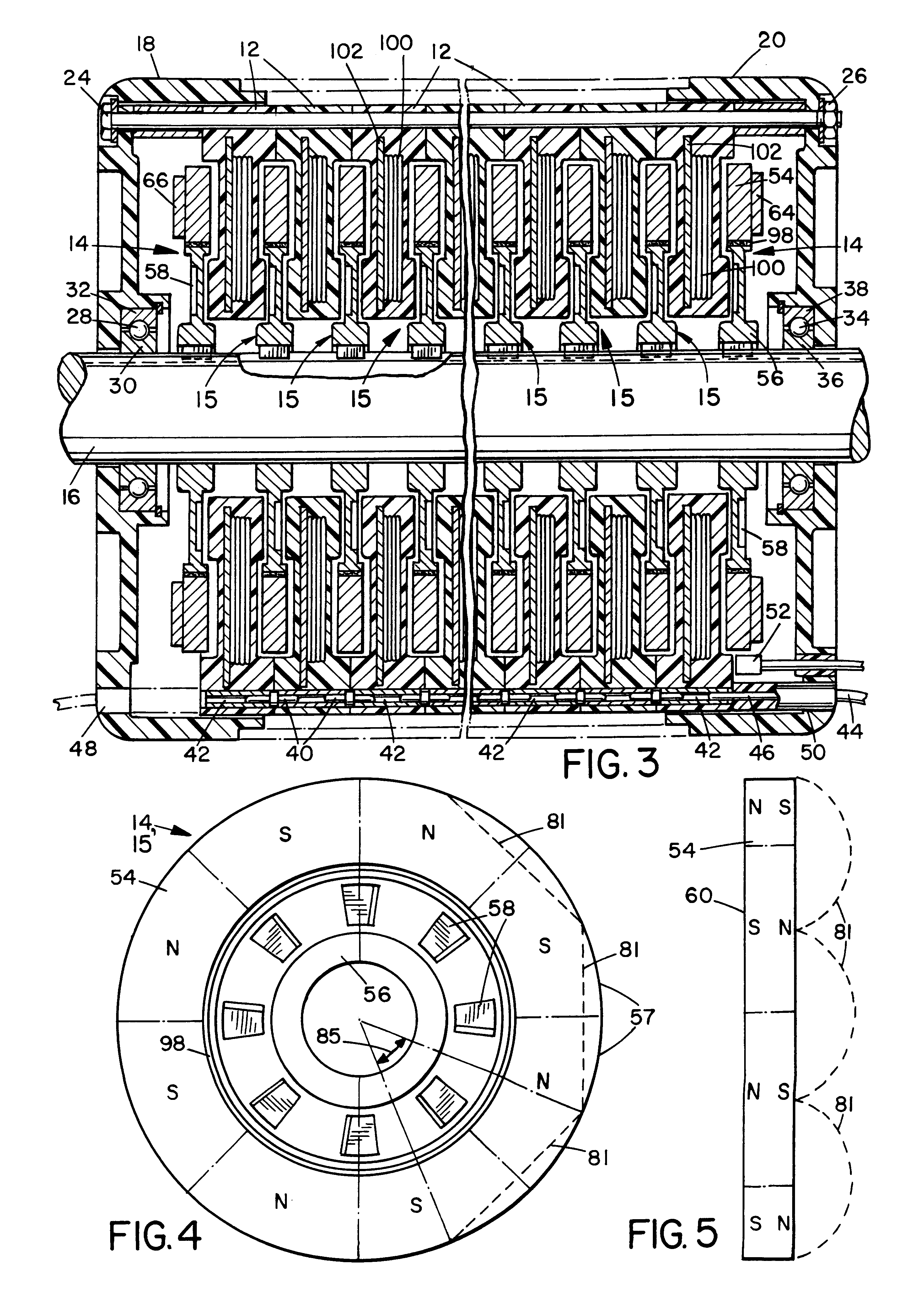Method for selectively coupling layers of a stator in a motor/generator
a technology of stators and layers, applied in the direction of magnetic circuits characterised by magnetic materials, magnetic circuit shapes/forms/construction, magnetic circuit rotating parts, etc., can solve the problems of reduced performance, material strength, and limited flux through which each winding half moves through the flux of the produced flux
- Summary
- Abstract
- Description
- Claims
- Application Information
AI Technical Summary
Benefits of technology
Problems solved by technology
Method used
Image
Examples
Embodiment Construction
As illustrated in FIGS. 1-3, a motor / generator includes a housing 10 (the center section of which is shown removed), multiple layers or stator assemblies 12 connected to one another and disposed within housing 10, and a rotor having multiple rotor discs 14 connected to a shaft 16 that extends axially through housing 10. Housing 10 includes two endpieces 18 and 20, each having multiple housing ventilation openings 22. Housing 10 also includes at least one removable midsection piece between endpieces 18 and 20 that is indicated in phantom line in FIGS. 1-3 but not shown for purposes of clarity. Endpieces 18 and 20 and the removable midsection pieces are preferably made of light-weight plastic. Bolts 24 extend from endpiece 18 axially through housing 10 through each stator assembly 12 and are secured by nuts 26 at endpiece 20. At one end of housing 20, ball bearings 28 retained between a first bearing race 30 connected to shaft 16 and a second bearing race 32 connected to endpiece 18 f...
PUM
 Login to View More
Login to View More Abstract
Description
Claims
Application Information
 Login to View More
Login to View More - R&D
- Intellectual Property
- Life Sciences
- Materials
- Tech Scout
- Unparalleled Data Quality
- Higher Quality Content
- 60% Fewer Hallucinations
Browse by: Latest US Patents, China's latest patents, Technical Efficacy Thesaurus, Application Domain, Technology Topic, Popular Technical Reports.
© 2025 PatSnap. All rights reserved.Legal|Privacy policy|Modern Slavery Act Transparency Statement|Sitemap|About US| Contact US: help@patsnap.com



